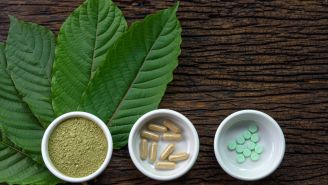Updated on September 20, 2024.
Salmonella is a type of bacteria that can cause food poisoning with an infection called salmonellosis. Named in honor of Daniel Salmon, a veterinarian and expert in animal infections whose work in the late 1800s helped lead to its discovery, Salmonella is responsible for a lot of illness. In the United States alone, it causes 1.35 million infections, 26,500 hospitalizations, and over 400 deaths every year, according to the Centers of Disease Control and Prevention.
There are more than 2,500 types of Salmonella, but only around 100 cause human infections. In the U.S., the two most common types are Typhimurium and Enteritidis. In less industrialized areas of the world, such as parts of Africa, Asia, and Latin America, a dangerous species called Salmonella typhi causes typhoid fever.
How do you get food poisoning from Salmonella?
You get salmonellosis by eating or drinking something that is contaminated by the bacteria, or by coming into contact with infected animals, their feces, or their environment. Many animals shed the bacteria in their feces. If a tiny—even imperceptible—trace of contaminated feces gets onto food that is then eaten by a human, that person can get sick.
The most common foods affected are chicken, beef, eggs, and unpasteurized dairy products. But fruits, vegetables, and even processed foods like peanut butter can also come into contact with the bacteria. Transmission occurs either when you eat the meat of an infected animal or its byproducts, like eggs or unpasteurized milk. Raw cookie dough and other unpasteurized foods with raw egg can transmit the infection as well.
Cooking kills the bacteria, but if even a tiny amount escapes being cooked—say, if you set a fork down on a contaminated cutting board, then eat using the fork—it can make you sick.
Salmonella can also be transmitted from a person carrying the bacteria if they prepare your food without properly washing their hands. Plants grown from contaminated seeds or exposed to contaminated fertilizers or water may also lead to infection.
Certain pets can give you Salmonella, too. Turtles, lizards, and amphibians harbor the bacteria on their skin. Reptiles in your home can spread it through their feces as well, meaning anything they touch can become infectious. In addition to reptiles, cases of salmonellosis have been linked to pet hedgehogs.
“Kids, especially boys, like reptiles a lot and like to handle them, but they’re not really great about washing their hands,” says Sarah Park, MD, the former State Epidemiologist and Chief of the Disease Outbreak Control Division in the State of Hawaii.
Signs and symptoms
Anyone can get salmonellosis. Symptoms typically appear six hours to six days after infection and include stomach cramps, vomiting, diarrhea that may contain blood, and fever. Those who are more vulnerable can develop severe symptoms, including dehydration that requires intravenous fluids.
Severe infections occur more frequently in infants and young children, seniors, and people with weakened immune systems.
In serious cases, a Salmonella infection can spread through the bloodstream to other areas of the body, including organs. The bones, joints, or linings of the brain and spinal cord can become infected.
You need to see a healthcare provider (HCP) if you suspect food poisoning and you develop concerning symptoms, like:
- Dehydration signs, like dry mouth, not urinating much, and dizziness
- Inability to drink fluids due to vomiting
- Diarrhea for at least three days
- Diarrhea with a fever higher than 102 degrees F
- Severe abdominal pain
- Blood in your stool
Diagnosis and treatment
Though eating a suspicious food and having classic symptoms can suggest salmonellosis, a lab has to analyze a stool sample in order to be sure. It may sound gross to collect a sample of your own poop, but Dr. Park says many infections don’t get counted because people don’t get diagnosed.
That means a single verified infection could indicate there are many more—even an outbreak. The CDC monitors cases of Salmonella infection nationwide, so it can track down the source of outbreaks.
People typically recover from salmonellosis on their own within four to seven days, but dehydration is a risk. Make sure you drink plenty of fluids and get enough electrolytes. If you can’t keep fluids down, you need to go to a hospital for IV fluids. Check with an HCP before taking any over-the-counter medications. Some anti-diarrheal medicines may actually prolong diarrhea caused by Salmonella.
Since Salmonella is a bacterial infection, you might be wondering if antibiotics are a good idea. The answer is, not usually. They won’t ease your symptoms and may actually cause you to shed the bacteria in your stool for longer, making you more likely to sicken others or potentially have a relapse. Treatment with antibiotics is usually only recommended for people with a severe infection, such as one that has entered the bloodstream, or for people at high risk of complications. These include adults aged 65 and older, infants, and people with a weakened immune system, as well as adults aged 50 and older with medical problems.
How to avoid infection
There are several ways to avoid a Salmonella infection:
- Wash your hands often with soap and warm water for at least 20 seconds, especially after using the bathroom, handling pets, or changing diapers, and before preparing food.
- Cook meat thoroughly. Poultry needs to reach an internal temperature of at least 165 degrees Fahrenheit, ground meat including beef and pork should be 160 degrees, and pork and steaks should be 145 degrees.
- Keep pets healthy and their habitats clean. Clean cages and aquariums outdoors. If that’s not possible, try a bathtub or utility sink instead of the kitchen sink. The healthier the pet, the less likely they will carry Salmonella.
- Don’t drink untreated water.
- Consider that cutting boards, utensils, or countertops that have touched foods, particularly raw meat, are potentially contaminated. Wash them in hot, soapy water. Consider using separate cutting boards for raw meat.
- Don’t drink unpasteurized milk or eat undercooked meat or raw eggs.
- Keep food refrigerated after purchase, including eggs from a farmer’s market.
- Wash fresh produce before use.
- Separate cooked foods from raw foods.
- Chill foods directly after serving them.
Remember that you can transmit the bacteria while you’re infected. Wait till you’ve been free of vomiting and diarrhea for 24 hours before you go back to work. If you work in the food industry or are a healthcare worker, talk to your manager and an HCP before you return to work.
“Just be mindful, because no one wants to get sick,” says Park. “Salmonella is not something you want.”







